The life miracle 500 mil years ago at Chengjiang museum

Editor's note:
Since 1984, scientists have unearthed 280 plus fossil varieties in 20 categories at the Chengjiang site. With 80 percent being novel ones, the fossils encompass almost all the ancestors of the existing species. In 2012, the Chengjiang fossil site was listed as a world natural heritage, making it China’s first and Asia’s only world heritage of fossils. A major witness of the Cambrian explosion and an evolutionary evidence for the early life forms on earth, the Chengjiang site is deemed one of the most surprising scientific discoveries in the 20th century. In August 2020, the Chengjiang Fossil Site Museum of Natural History was opened to the public. Employing the modern virtual-reality technology and the somatosensory interactive expressions, the museum “enlivened” the fossils, showcasing vivid scenes of the Cambrian explosion and spectacular evolutions of the early life forms. Now the Chengjiang natural museum is a popular destination for tourists in Yunnan.
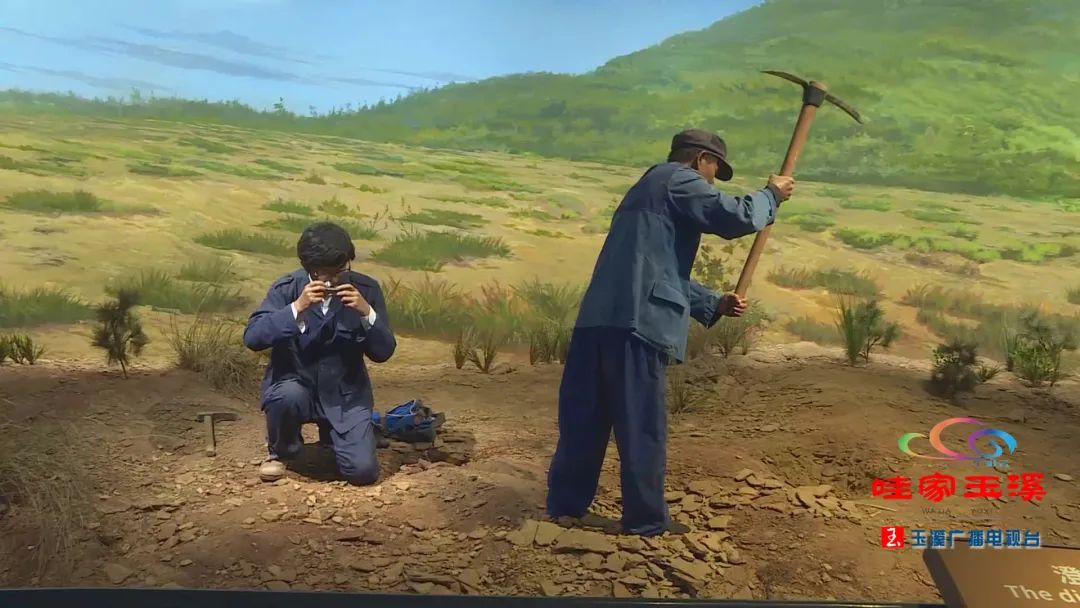
Discovering the life miracle 500 mil years ago at Chengjiang museum
The Chengjiang Fossil Site Museum of Natural History is situated in central Yunnan’s Yuxi City. In 2012, the Chengjiang fossil site was listed as a world natural heritage. As China’s first cultural facility built right on a fossil site, the natural museum houses over 60,000 existing animal specimens and paleontological fossils across the world. Of these, the representative Chengjiang oryctocoenose 520 million years ago sheds light on life evolution of the Cambrian (the first geological period of the Paleozoic Era that lasted from 541 to 485 million years ago).
“Here, you can see the ancestors of almost all the existing animal species, including human beings,” said Chen Taimin, curator of the Chengjiang natural museum. Chen added the Kunming fish (Myllokunmingia) is dubbed the most precious treasure of the museum. “As the earliest vertebrate ever discovered in the world, the Kunming fish is the ancestor of humans 500 million years ago. It has all the core organs of a human being.
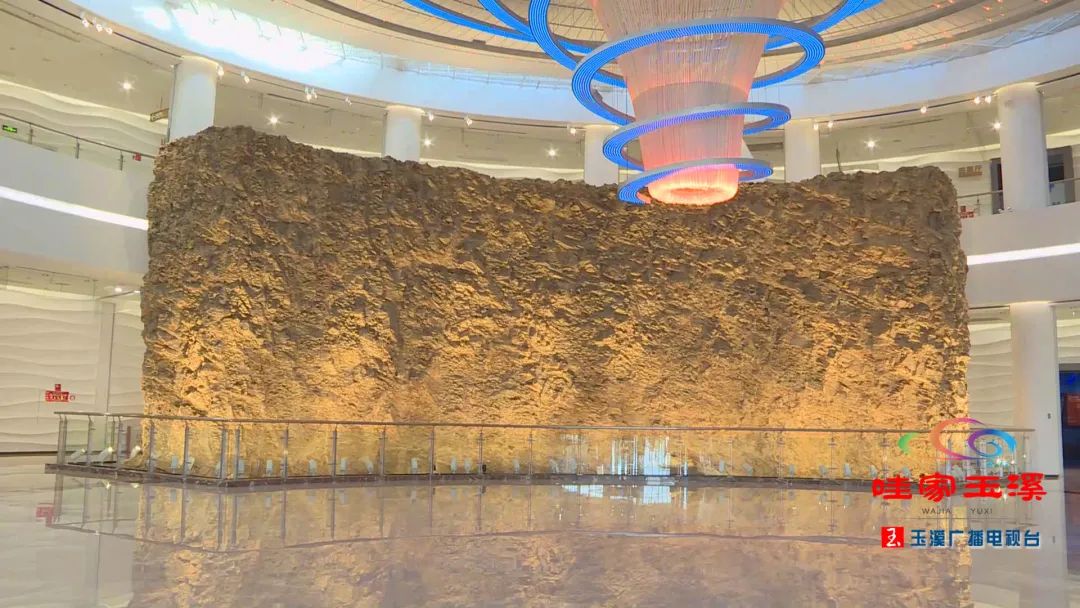
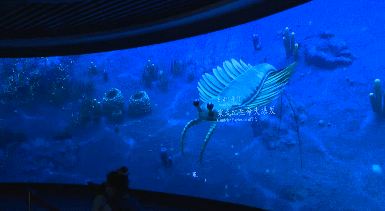
Entering the Chengjiang Fossil Site Museum of Natural History, visitors were impressed by a “subsea channel” formed by organic flexible screens. In no time, a peculiar gigantic creature rushed across the ceiling screen, puffing and blowing. It made a big show of its strength. Chen said the prehistoric creature is called a mystic shrimp (Anomalocaris). With a two-meter body length, the Anomalocaris is bigger than any other marine life form, and it is the “dinosaur” of the Cambrian riot.
Although the Cambrian explosion happened in primordial times, it was unveiled by an accidental hammer hit 37 year ago. Hou Xianguang, a former research fellow at the Nanjing Institute of Geology and paleontology, Chinese Academy of Sciences, discovered the Chengjiang fossils by chance on July 1, 1984, when he was looking for the Order Bradoriida (an arthropod animal of the Cambrian period) in the Maotianshan Mountains. Back then, Hou often joked about his hammer, saying it “opened” the door to the mystical Cambrian radiation. Now, the scene is restored at the Chengjiang natural museum. When parents take their kids to the museum, they usually stay longer at the hall displaying Hou’s discovery.
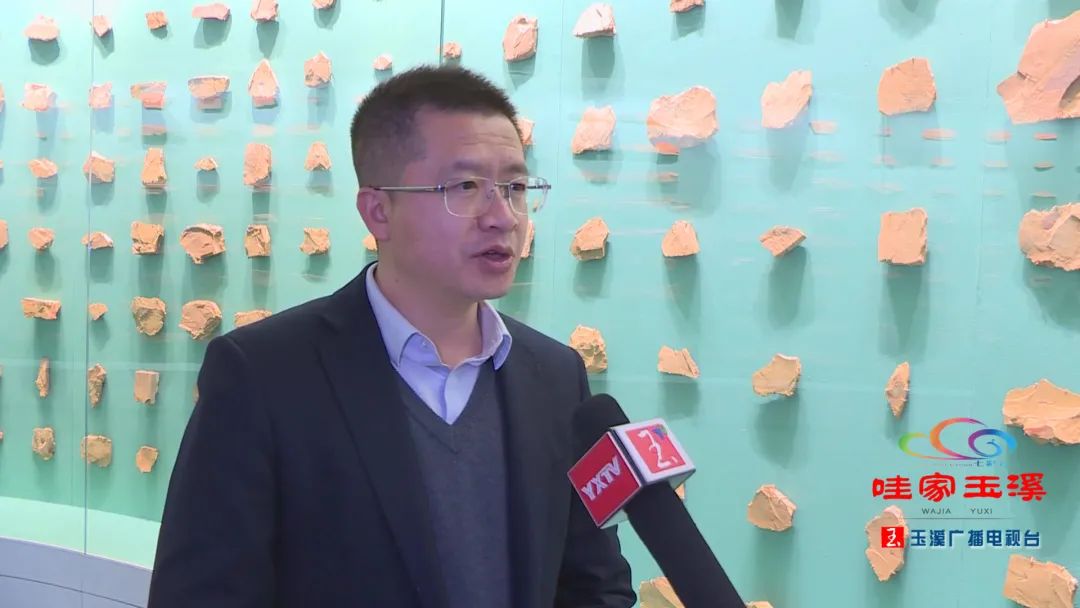
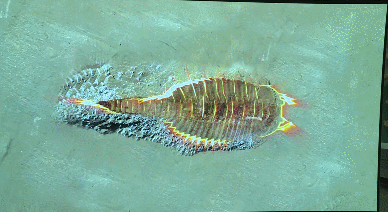
In August 2020, the Chengjiang Fossil Site Museum of Natural History was opened to the public, making an instant hit among tourists, especially the net celebrities, in Yunnan province. “Employing the modern virtual-reality technology and the somatosensory interactive expressions, the museum “enlivened” the fossils, showcasing vivid scenes of the Cambrian explosion and spectacular evolutions of the early life forms,” said Chen Taimin.
Talking about how to run the museum, Chen frankly said the Chengjiang fossil specimens are small and not direct enough. Also, the Cambrian period is so far away that its relevant knowledge is a bit tall for the general public. Therefore, exhibiting the pure fossils does not exert the effect expected. That is why we had to drop part of the traditional expressions and turned to modern technologies in displaying the fossils.
“Only via the high-end exhibiting platform, can we highlight the value of world-class fossils.” Chen Taimin said the Chengjiang natural museum made full use of modern lighting technology and advanced digital media in its exhibiting methods. By restoring the fossil species and the Cambrian marine views, the museum tells audience the stories of fossils and life evolution. Moreover, the Chengjiang museum showcases the major species extinctions in history. With the focus shifting from the Cambrian explosion to the environmental issues, the objects on display call on the public to protect the earth and care for nature.
Writing by Yan Yong; Photos by Yuxi Radio and TV; Trans-editing by Wang Shixue